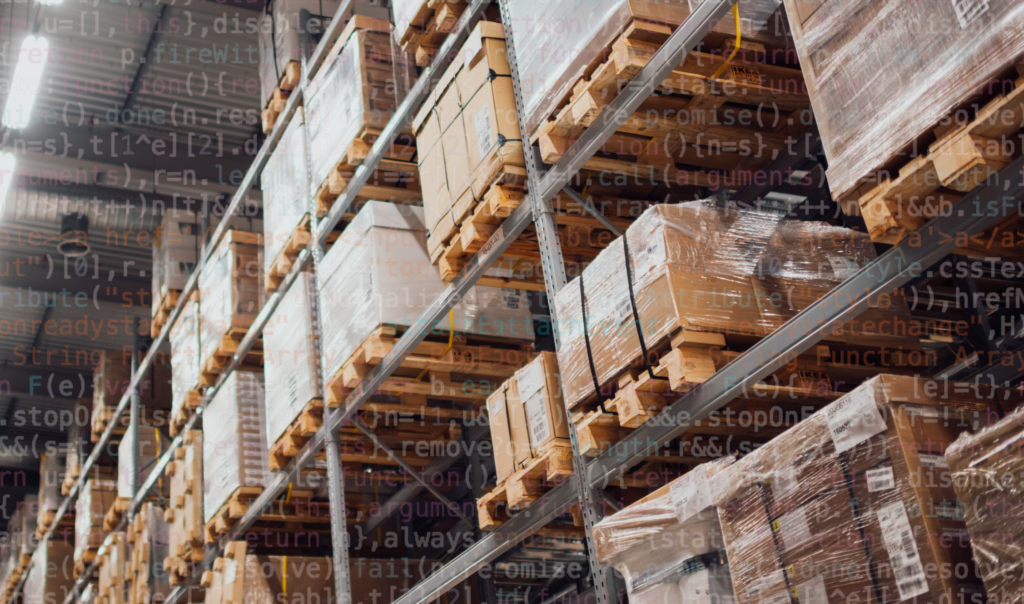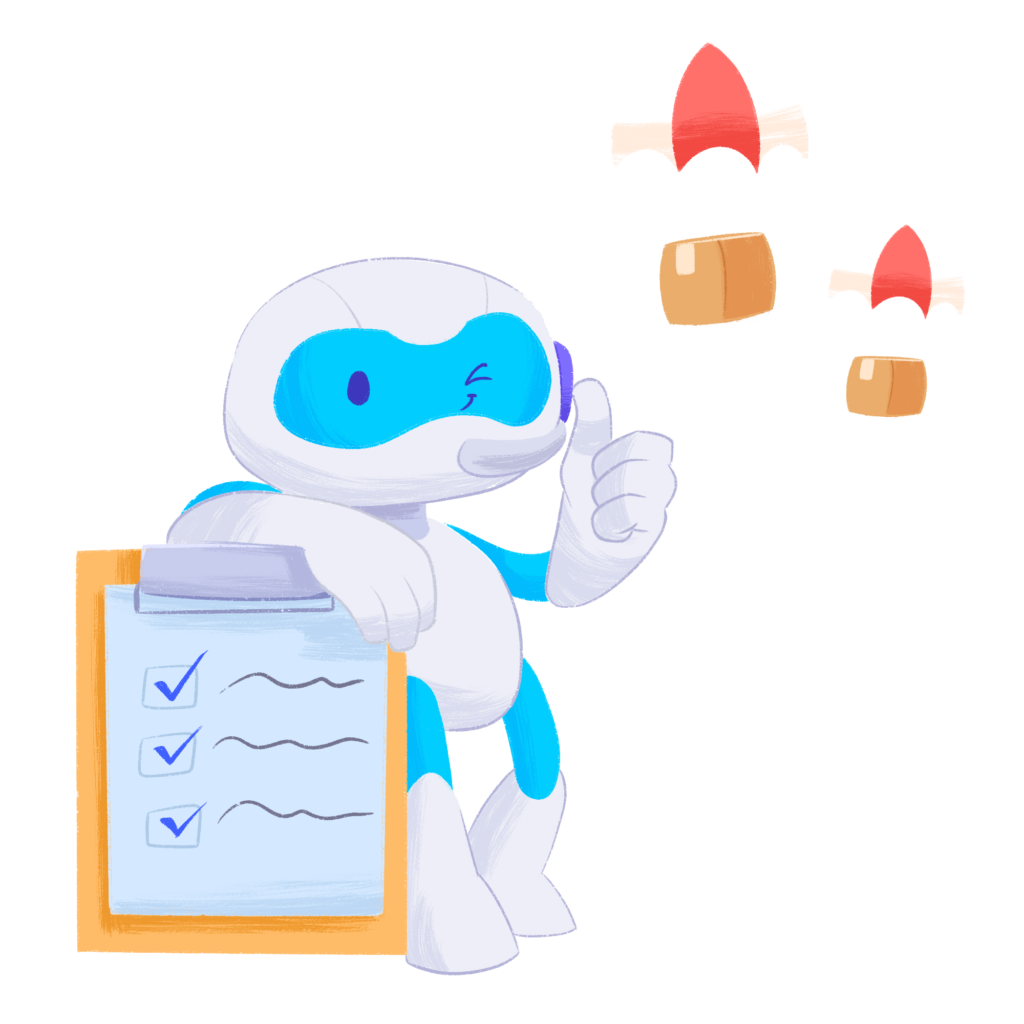Jul 11, 2023 | 10 min read

Building the right e-commerce tech stack empowers you to automate your operations, such as inventory management and order processing, freeing up your time to concentrate on growth and building customer relationships. It’s important to find the right tools that work for your business and to customize them to your needs.
There’s much to consider when building your store, like your shopping cart and payment gateway. But what if you’re well past that point and in need of automation because your business is growing and manual work just won’t cut it anymore? In this article, we aim to have you walk away with a good understanding of what to consider when building a tech stack to automate your e-commerce brand.
Your back office involves order processing, payments, and paying vendors. If you can’t automate some of those routine tasks, you won’t scale and be profitable as a business. So, focusing on the back office, where there’s less personalization, makes sense. A lot of that can go untouched on a day-to-day basis with minimal monitoring.
We tend to see smaller shops running more manually. They’re dropshipping, catching some traction, and then start inventorying stuff to improve their margins and bottom line. So, where do inventory planning and purchasing come into play, really? And how does that work with your existing dropship model? If you’re a scaling, growing business, you should follow the direction of where your business is going and what those needs are.
People have a misconception that there are software solutions tailored to very specific use cases or industries. But automating a back office isn’t always a one-size-fits-all situation; you need to find the right tools and make configurations and adjustments to create efficiencies and productivity. You typically won’t be able to buy a Sage 500 ERP or Duoplane, and be able to make that plug-and-play without a short setup process. This may sound overwhelming, but it’s quite easy and quick, and in no time, you’ll have apps customized to fit your exact needs. By investing your efforts and working towards aligning the tool with your unique workflow, you’ll unlock its full range of benefits and witness the positive impact it can have on your business.
On the other side of the spectrum of setting it and forgetting it, some have difficulty trusting the software. They might have decided to automate something in their business, get an app, and even pay for it, but they still do everything manually. Once you’ve committed to a software and put in the work to customize it to your business, trust that it knows what it’s doing. It will be your new best friend, and you’ll wonder how you got by before without it.
Duoplane can automate sending POs, inventory syncing, & shipment feeds. Get in touch with us to start your free trial!


One major benefit is that you remove human error. Systems can have errors, but humans can make even more without checks and balances. If you do it right, reducing manual intervention creates efficiencies and cost savings over time. You can also scale a business with automation, which saves on overhead. However, some potential trade-offs exist, such as losing personalized touches when working with vendors. Although you can add some personalization with tools like Klaviyo, sometimes you lose some human contact, making the process feel stale (see more on keeping your personalized touch below).
Software can quickly sort through all sorts of data that comes your way, like emails, web forms, social media posts, and even system data. The best part? It can tell you immediately if there are any issues like out-of-stock products being ordered or shipping issues. That way, you can fix things fast and keep your customers happy.
When you automate repetitive tasks, your employees get to say “bye-bye” to all that stress. And when stress goes away, morale gets a major boost. Also, handling complicated processes becomes a breeze, making everyone’s job easier. This adds up to a happier workplace where everyone can work together as a team.
Automating your back end is a lifesaver for e-commerce businesses because it can seriously cut costs. When you automate tasks, you need fewer resources to get things done. Plus, unlike humans, software never runs out of energy. That means you can crank out more work in way less time.
Businesses collect tons of data but it can be difficult to figure out how to use it. That’s where automation software comes in. With automated tools, you can unlock all of the data and have it organized in a refreshing and easy-to-read way.
It’s like putting on X-ray vision goggles for your business – suddenly, you can see so much more than before. All those hidden details and trends become clear, giving you a deeper understanding of your business and how to improve it.
Automation makes any business’ day-to-day easier, but our main values at Duoplane are personalization and empathy, which can be challenging to maintain with automation. We aim to strike a balance between automation and manual processes. For example, in customer support, we always have a live person responding to customers and limit our automated emails to prospects and clients. So, how can e-commerce brands balance automation for scalability and growth while maintaining personal connections with customers and keeping retention high?
It’s really about starting small and identifying the basics that can be automated without losing touchpoints with vendors or customers. If you’re uncomfortable with automation, begin with smaller tasks and gradually progress. Understand the nuances of your business and what can be easily automated while maintaining personal touches and relationship aspects. As you get more comfortable, you can take bigger leaps with automation, but there will always be a need for human touch and relationships to elevate your e-commerce brand.
The difference between Amazon and your business is not the one-day shipping. It’s the personal touch, human interaction, and brand connection with your customers. That’s the value-add you create and why people buy from you instead of Amazon, Walmart, or Target. So, you want to emphasize that human relationship.
Here at Duoplane. we have many clients that truly show what success should look like when building a tech stack. They’ve taken the time to find the right tools to automate their back office so they can put a massive emphasis on customer service and building relationships with their clientele.
One client puts their human capital towards customer service; they’re out in industry-specific forums and interacting with clients and prospects all day long. On the back end, they have a PIM system and automated product data management, as well as order flow management for both dropship and self-fulfillment. They process thousands of orders a month and are a prime example of focusing on customer relationships while creating efficiencies in the back end.
We’ve been the industry-leading solution to automate dropshipping operations for over 12 years. Check out our reviews page to learn why our clients love us.

When thinking about shipping software, there’s some internal questions to consider. Are you shipping internationally? Are you working with a 3PL? Are you dropshipping? Are you self-fulfilling or a combination? These questions have implications for what systems would make up your tech stack. For example, if you’re self-fulfilling out of your basement, garage, or warehouse, you’re going to use ShipStation to manage all of your shipping events quickly.
As you’re growing and dealing with customer relationships, a CRM (Customer Relationship Manager) is really important. You can manage and store all customer information in one database, it can help you with sales and marketing and improves collaboration between team members, so you’re always in the know of that customer.
Again, when it comes to choosing accounting software, there’s questions to consider. Do you have an ERP system to help you manage inventory planning, forecasting, and financials? Are you going to be a Microsoft Dynamics user? How complex is your product? Are you sourcing and doing product development? Accounting tends to go ignored until it’s too late, so implementing this software early will get you a step ahead.
Order routing software plays a crucial role in the success of dropshipping businesses. With dropshipping, where products are shipped directly from suppliers to customers, efficient order management is essential. Order routing software helps automate and streamline the process by efficiently handling order placement, fulfillment, and tracking. It enables seamless communication between various parties involved, including suppliers, warehouses, and shipping carriers. It’s truly the only way to empower dropshipping businesses to effectively manage high volumes of orders, enhance customer satisfaction, and drive business growth.
Interested to learn more about automating your back office and building your tech stack? Check out this podcast episode, where our host Mandy Potter interviews Kenny Trusnik, President of Forest City Digital, an eCommerce-focused marketing agency. They discuss building an e-commerce tech stack and selecting suitable platforms, payment gateways, and management systems. In addition, they talk about e-commerce challenges, misconceptions about software, and patterns seen in successful e-commerce businesses.
This post was last updated on Jul 17, 2023.
Automating your e-commerce tech stack, especially when focused on dropshipping, involves implementing the right tools tailored to your business needs. By investing in software solutions such as Duoplane for order routing, you can streamline your order placement, fulfillment, and tracking processes. These solutions enable seamless communication between suppliers, warehouses, and shipping carriers, ensuring efficient order management and customer satisfaction.
Automating order processing, especially in the back office, allows businesses to scale more efficiently. Manual interventions can be time-consuming and prone to errors. By automating routine tasks such as inventory management, payments, and vendor interactions, businesses can focus on growth and customer relationship-building, fostering profitability.
Software solutions can be instrumental in managing inventory, especially for dropshipping retailers who have multiple vendors and suppliers. Implementing these tools requires a setup process, but once customized to your workflow, they can provide invaluable insights and automation for inventory planning and product data management.
Positive UX in e-commerce is all about connecting with customers on a personal level. It could involve offering 360-degree product views, using AI for personalized product recommendations, or focusing on customer service to build trust. The key is to replicate the in-store experience online, making users feel valued, understood, and satisfied, emphasizing a customer-centric approach.
Order routing is crucial for dropshipping businesses, allowing products to be shipped directly from suppliers to customers. Efficient order routing software automates sending purchase orders to vendors, gives an overview of fulfillment status, and simplifies the transfer of tracking information. It ensures smooth communication between all involved parties, making it indispensable for managing higher order volumes and driving business growth.
Duoplane is a dropshipping automation software built by dropshippers, for dropshippers. We’re here to help you streamline your ecommerce retail fulfillment operations and automate order routing, inventory syncing, shipment feeds, and more.
Don’t just take our word for it – check out our reviews and case studies to learn why we’ve been the industry-leading solution for over 12 years, assisting over 300 retailers in onboarding over 2000 vendors and 3PL warehouses.
Experience the best dropshipping automation software risk-free with our 14-day free trial. Our dedicated onboarding specialists will guide you through the setup process, ensuring you’re ready to hit the ground running.
IF YOU DROP SHIP,
THEN YOU’LL LOVE DUOPLANE.
Duoplane intelligently and automatically routes orders to the right vendor or warehouse.
Keep everyone on the same page and save time by allowing vendors to manage their orders.
Automate vendor inventory feeds to keep your product catalog accurate.
Stay on top of your books by connecting with your accounting system to sync vendor invoices.
Streamline your operations and centralize orders from all of your e-commerce channels
Manage the full order cycle, including changes, shipments, returns, and order exceptions.
Duoplane connects to your existing systems to minimize manual effort by you or your team.
Provide feedback to vendors using actionable performance metrics.
Curious what Duoplane can do? See for yourself with a free trial.
Get in touch with us today!